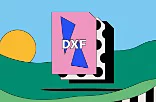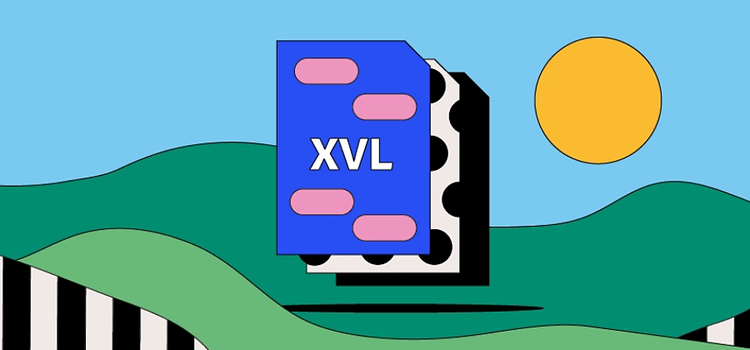
Check out this alternative format for compressing and sharing CAD files.
The XVL file format is used to display high-quality 3D images and designs. It was created as a smaller, more agile file type than average 3D formats, which can be difficult to share and view. Discover the pros, cons and uses of the XVL format — and learn to create your own.

XVL stands for Extendable Virtual World Description Language. It’s a popular file format for sharing 3D designs in fields like engineering, manufacturing, and architecture. As a vector file, it’s built from a complex formula of lines, points, and mathematical algorithms that makes it infinitely expandable without pixilation.
A single XVL file can accommodate more than a gigabyte of CAD data. It contains highly accurate geometry, as well as additional information like materials and assembly instructions. Users can even store designs from multiple CAD files and formats in a single XVL — making it a highly versatile design format.
The team that developed the XVL file launched it in 1997. It was created to overcome the unwieldy file sizes associated with CAD drawings and designs.
The team that created the XVL file is closely linked with a major manufacturer in the automotive field. This means it can share designs from multiple CAD programs across different automotive fields – like car and train parts, designed on CATIA and CREO — and ensure consistency.
While XVL is a proprietary file format to its original developer, XVL viewers are free — so any user can open and view a file without having to pay licensing costs.
XVL is used across a range of fields. So why is it so popular?
One of the main uses of XVL files is their ability to compress a CAD design to a far smaller file. An XVL can reduce a design to 1% of its original size — maintaining essential data for design, assembly, service, parts, and catalogues.
These small file sizes help designers to collaborate on projects, share them with stakeholders and send them to customers.
The XVL file format allows users to convert and update design files from any 3D CAD format, and even incorporate designs from different programs into a single XVL file. This is invaluable to large manufacturing and engineering organizations that work across different design fields.
CAD designs can be shared with other users and authors, who can add instructions, interactive documents, and catalogues to the file.
There are many XVL advantages and disadvantages to consider before using this file format.
Follow these simple steps to open an XVL file on Adobe Acrobat 9 Pro Extended.
1. Open Adobe Acrobat.
2. Click File > Open.
3. Select your XVL file from your computer.
4. Select Open.
Like all CAD file types, XVL is a vector file. This means it’s built from complex mathematical algorithms, graphs, lines, and points — making it infinitely expandable without losing resolution. This makes it a useful tool for complex designs. Raster file types are made from a set number of colored pixels and are more commonly used for digital photographs.
Read more about the differences between raster and vector files
Create beautiful vector art and illustrations. 7 days free, then US$22.99/mo.